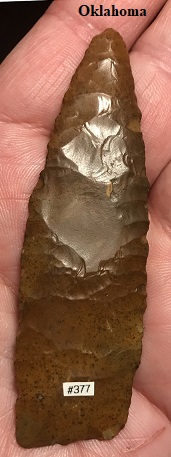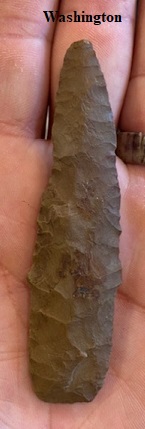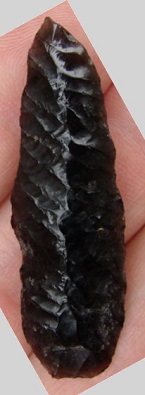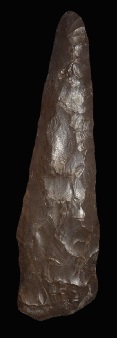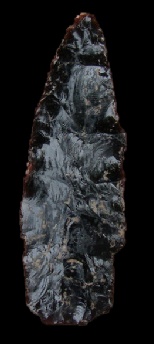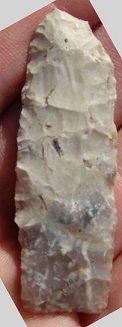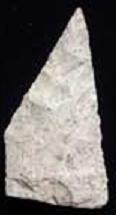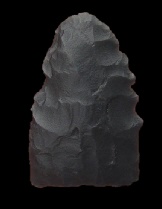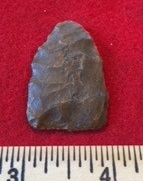Outline is Representative of Size and Shape:



Name Details:
Identified By: H. Maria Wormington
Named For: Associated Culture
Date Identified: 1957
Type Site: =
Identified By: H. Maria Wormington
Named For: Associated Culture
Date Identified: 1957
Type Site: =
Point Validity:
Valid type
Wormington was a renowned anthropologist and served as Curator Emeritus for the Denver Museum of Natural History. She studies the Fremont Culture and Identified their origins, but she is most known as being the foremost expert on Paleo Archeology. This point was published in a professional publication and is considered a valid type.
Wormington was a renowned anthropologist and served as Curator Emeritus for the Denver Museum of Natural History. She studies the Fremont Culture and Identified their origins, but she is most known as being the foremost expert on Paleo Archeology. This point was published in a professional publication and is considered a valid type.
Cody Knife
Cluster: Description of Physical Characteristics and Flaking Pattern:
This is a medium asymmetrical knife. The blade may range from straight to excurvate. Shoulders, when present, are weak. The stem is straight with a straight base. The appearance may vary depending on how the knife was made, but the key characteristics are asymmetrical and a diagonal blade.
Size Measurements:
Commonly Utilized Material:
Additional Comments:
Distribution: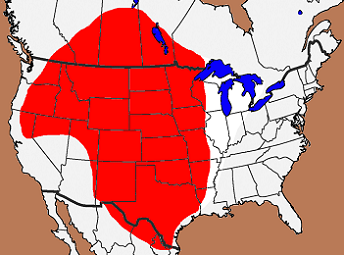

Distribution Comments:
This point is most commonly found in Canada and into the northern plains. May be found into the northwest and into Texas, northeastern Chihuahua, northern Coahuila, northern Nuevo Leon, and the panhandle of Tamaulipas, Mexico. Found with Eden and Scottsbluff points. Many have same distribution as Scottsbluff point.
This point is most commonly found in Canada and into the northern plains. May be found into the northwest and into Texas, northeastern Chihuahua, northern Coahuila, northern Nuevo Leon, and the panhandle of Tamaulipas, Mexico. Found with Eden and Scottsbluff points. Many have same distribution as Scottsbluff point.
Age / Periods:
Date: 9,250 - 8,850 B.P.
Cultural Period:Transitional Paleo to Early Archaic
Glacial Period: Early Holocene
Culture: Cody culture
Date: 9,250 - 8,850 B.P.
Cultural Period:Transitional Paleo to Early Archaic
Glacial Period: Early Holocene
Culture: Cody culture
Age Details:

